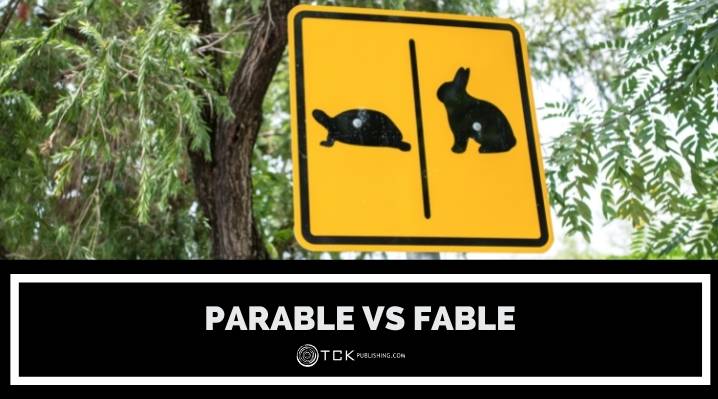
Fables and parables can botj can be described as simple stories that teach a moral lesson. They’re also used primarily to teach, rather than to entertain.
This leads to many people using the terms interchangeably. But while they may share more similarities than differences, there are certain aspects of each that separate the two.
What Is a Fable?
A fable is a short story that is written in either prose or verse form. It uses anthropomorphized animals, forces of nature, plants, and inanimate objects as characters.
Fables are one of the most enduring forms of folk literature. And while they also share similarities with fairy tales in many respects, their main difference is that fairy tales are meant more for entertainment.
Perhaps the most popular fables are those written by the storyteller Aesop. His collection includes The Tortoise and the Hare, The Ant and the Grasshopper, and The Crow and the Pitcher.
What Is a Parable?
A parable is also a short story that is written in prose or verse form. It teaches a basic truth, and often, a religious principle. It often involves human characters struggling with a moral dilemma where they make mistakes and must suffer the consequences.
Parables are also often compared to allegories. Both communicate important messages about human nature, religion, society, and morals.
The difference is that a parable is much more condensed in short story form, unlike an allegory, which tends to be book-length. Parables also focus on one particular lesson, while allegories can include multiple meanings.
The most famous parables are those found in the New Testament, where Jesus uses simple stories to teach his followers complex moral and theological concepts. The Prodigal Son and The Good Samaritan are two of these.
Parable vs. Fable
Because of their shared elements, it can sometimes be confusing to differentiate parables from fables. In fact, there are some stories that fall under both types.
But parables and fables do differ in a few areas. Their most obvious difference is the characters they employ in their storytelling.
Parables exclusively use human characters to illustrate their meaning. On the other hand, fables mostly employ non-human characters, such as animals and forces of nature. It may even use non-existent creatures or non-living objects to tell its story.
Another difference are the lessons they contain. While fables can teach moral and ethical lessons (respecting the elderly, promoting equality, the virtue of being good to others), parables include these but also deal with religious and spiritual truths (like relationship with God, the existence of Heaven, and the gift of life).
Also, most fables explicitly state their lessons at the end. Parables don’t, but their meanings are straightforward or obvious enough to be easily understood.
Lastly, fables are set in a world with fantastical elements while parables are rooted in reality. So in one story, readers might identify with a talking animal, while in the other, a purely human character.
A Final Note on Parables and Fables
Parables and fables have been around for ages, but their purposes have stayed the same. They’re used in a didactic sense: storytelling meant to teach a lesson.
Only the medium has changed. While both started out as oral traditions, they’ve since been added to our literature. Today, most of them are used to help teach still-developing children morals and ethics that society holds valuable.
What fables and parables were read to you as a child? Share them in the comments below!
If you enjoyed this post, then you might also like:
- Writing Prompts for Kids: Questions to Inspire Young Writers
- 16 of the Best Children’s Authors that Delight All Ages
- 30 Classic Children’s Picture Books
- 15 Best Children’s Books to Read Next: Inspiring Reads for Little Ones

Cole is a blog writer and aspiring novelist. He has a degree in Communications and is an advocate of media and information literacy and responsible media practices. Aside from his interest in technology, crafts, and food, he’s also your typical science fiction and fantasy junkie, spending most of his free time reading through an ever-growing to-be-read list. It’s either that or procrastinating over actually writing his book. Wish him luck!
